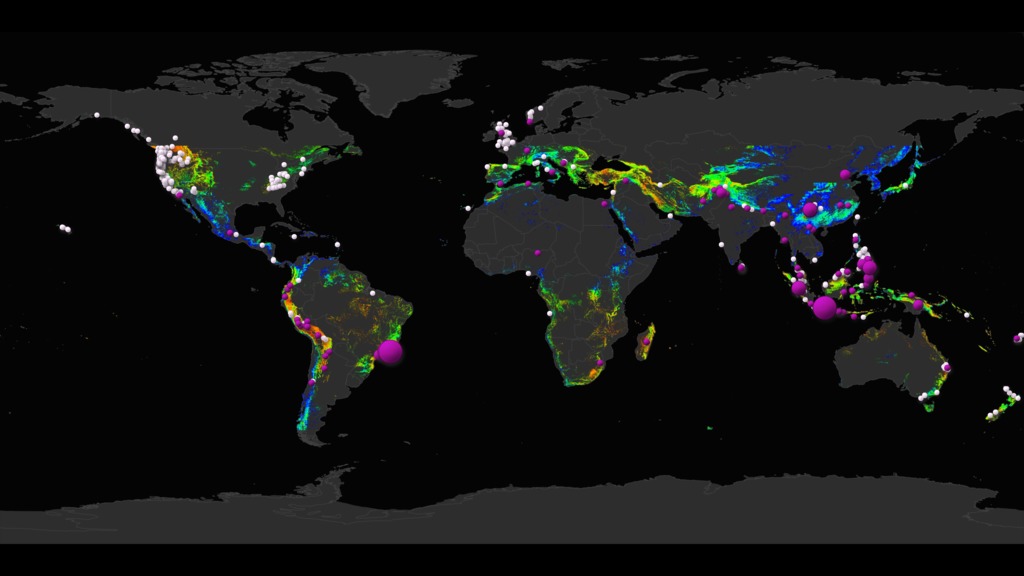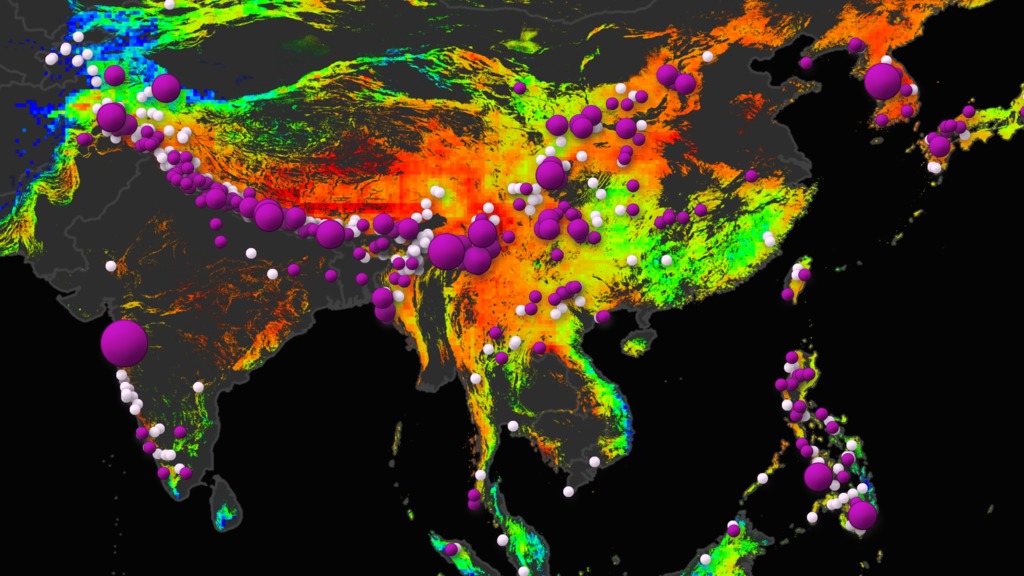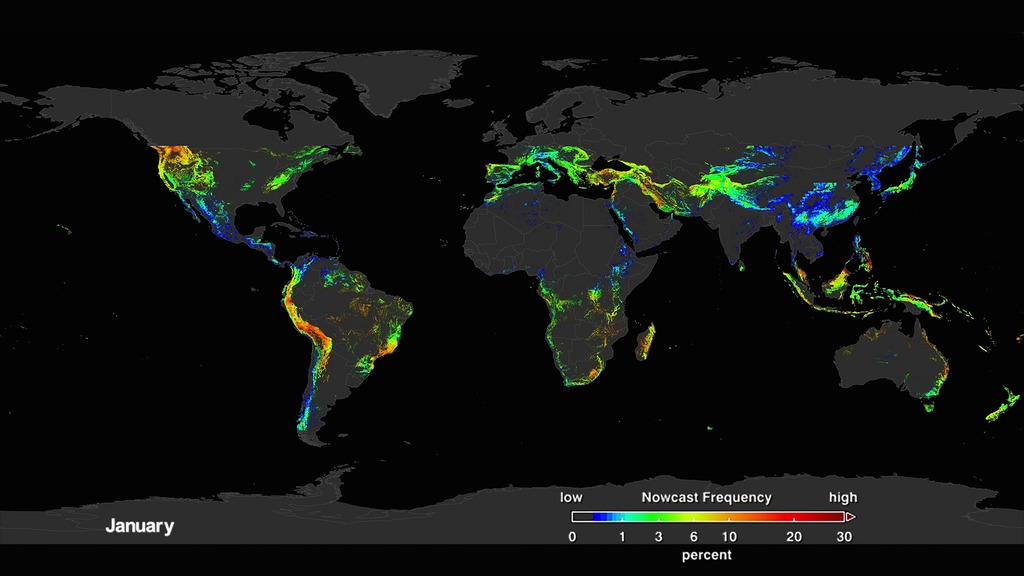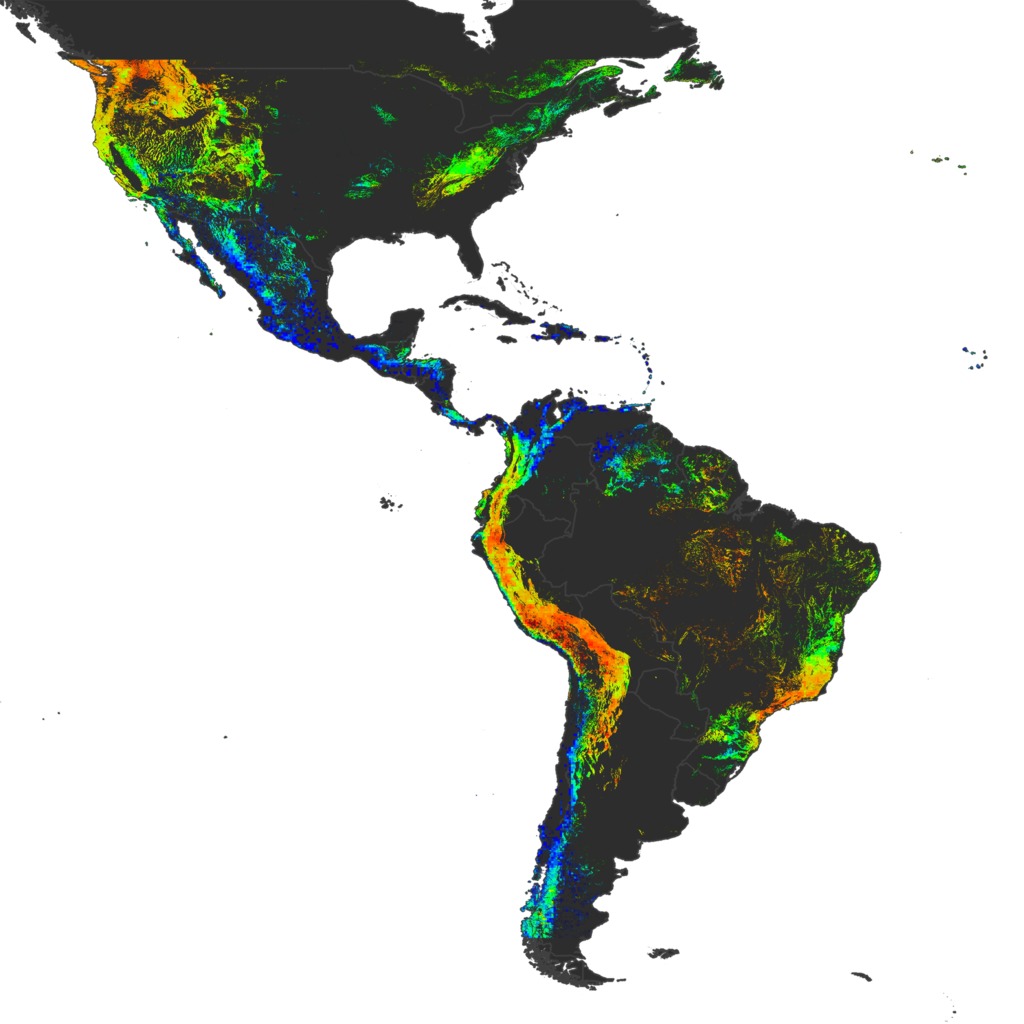Global Rainfall-Triggered Landslides from 2007 through 2015
Rainfall-triggered landslides over population data from January 2007 through March 2015 in Asia and the Himalayan Arc.
Landslides occur when an environmental trigger like an extreme rain event, often a severe storm or hurricane, and gravity's downward pull sets soil and rock in motion. Conditions beneath the surface are often unstable already, so the heavy rains act as the last straw that causes mud, rocks, or debris- or all combined- to move rapidly down mountains and hillsides. Unfortunately, people and property are often swept up in these unexpected mass movements. Landslides can also be caused by earthquakes, surface freezing and thawing, ice melt, the collapse of groundwater reservoirs, volcanic eruptions, and erosion at the base of a slope from th flow of river or ocean water. But torrential rains most commonly activate landslides. The NASA Global Landslide Catalog (GLC) was developed with the goal of identifying rainfall-triggered landslide events around the world, regardless of size, impact, or location. The GLC considers all types of mass movements triggered by rainfall, which have been reported in the media, disaster databases, scientific reports, or other sources. THe GLC has been compiled since 2007 at NASA Goddard Space Flight Center.
Landslide inventories are critical to support investigations of where and when landslides have happened and may occur in the future; however, there is surprisingly little information on the historical occurrence of landslides at the global scale. This visualization displays all rainfall-triggered landslides from 2007 through December 2015 from a publically available global rainfall-triggered landslide catalog(GLC). This is a valuable database for characterizing global patterns of landslide occurence and evaluating relationshipswith extreme precipitation at regional and global scales. For more information on the Global Landslide Catalog, please visit http://ojo-streamer.herokuapp.com.
Global rainfall-triggered landslides over population data from January 2007 through March 2015.

Global Landslide Catalog fatalities legend

Legend for the Global Population of the World, version 3 (GPWv3) in 2000 from NASA's Socioeconomic Data and Applications Center (SEDAC).

New rainfall-triggered landslides are displayed in opaque pink. The pink overlay is varied with time so that after 30 days, the pink has fully faded away.
Global rainfall-triggerd landslides over population data from January 2007 through March 2015 without the legends.
Rainfall-triggered landslides for each day in 2010 in Asia and the Himalayan Arc.
Global rainfall-triggered landslides for each day in 2010.
Rainfall-triggered landslides in Asia and the Himalayan Arc during 2014.
Global rainfall-triggered landslides during 2014.

The 44 rainfall-triggered landslides in 2007. In 2007, Asia saw 251 landslides and North America had 94.

The 552 rainfall-triggered landslides that occurred in 2008. Asia saw 339 landslides and North America saw 139.

The 423 rainfall-triggered landslides that occurred in 2009. Asia reported 239 landslides and North America reported 108.

The total 1543 rainfall-triggered landslides during 2010. Asia reported 736 landslides, North America 462, and South America 191. In 2010, rainfall-triggered landslides caused 5,363 fatalities.

The 1,213 rainfall-triggered landslides during 2011.

The 575 rainfall-triggered landslides reported in 2012.

The 1,055 rainfall-triggered landslides reported in 2013.

The 880 rainfall-trigered landslides detected in 2014. In 2014, Asia reported 3,632 fatalities of the total 3,848 fatalities worldwide.
Credits
Please give credit for this item to:
NASA's Scientific Visualization Studio
-
Scientist
- Dalia B Kirschbaum (NASA/GSFC)
-
Data visualizer
- Lori Perkins (NASA/GSFC)
-
Producer
- Joy Ng (USRA)
-
Data provider
- Thomas A. Stanley (USRA)
Release date
This page was originally published on Thursday, July 2, 2015.
This page was last updated on Monday, July 15, 2024 at 12:03 AM EDT.
Missions
This visualization is related to the following missions:Series
This visualization can be found in the following series:Datasets used in this visualization
-
IMERG
ID: 863This dataset can be found at: http://pmm.nasa.gov/sites/default/files/document_files/IMERG_ATBD_V4.4.pdf
See all pages that use this dataset -
GLC (Global Landslide Catalogue)
ID: 872
Note: While we identify the data sets used in these visualizations, we do not store any further details, nor the data sets themselves on our site.




